Chapter: 9th Social Science : History: Industrial Revolution
Attributes of Industrial Revolution
Attributes of Industrial
Revolution
The main attributes of the Industrial Revolution were
technological, socio- economic and cultural.
·
Use of new basic materials: iron and steel
·
Use of new energy sources: coal, electricity, petroleum
·
Invention of new machines such as the spinning jenny and the power
loom that increased the production with a minimum expending of human energy
·
Emergence of a new organization known as the factory system, which
entailed increased division of labour and specialisation of work
·
Development in transportation and communication
·
Increasing application of science to industry
·
The use of new technology
Beginnings
The Industrial Revolution began in England first because, it had
certain objective conditions. They were:
·
England had abundant resources and possessed colonies, with India
being “the brightest jewel in the British Crown”
·
Access to coal, iron and raw cotton from the colonies
·
England possessed the required infrastructure for textiles,
developed by immigrant artisans from the Netherlands
·
England had a developed banking system, a growing entrepreneurial
class, and potential investors
·
Encouragement of the Royal Society of England for scientific
discoveries and inventions
·
Political stability of England to bestow its full attention to
industrial growth
Invention of Steam Power
In the 18th Century, British mine- owners were faced with the
problem of water seeping into the mines. Water had to be removed to extract
coal. So they employed labourers to pump the water out. Employing human labour
cost a lot of money. It was at that juncture the British engineer, Thomas
Newcomen invented a contrive to pump the water out of mines. But the mechanism
he developed consumed too much fuel. James Watt, a Scottish engineer, converted
a stationary steam engine to a rotary engine which consumed less fuel.
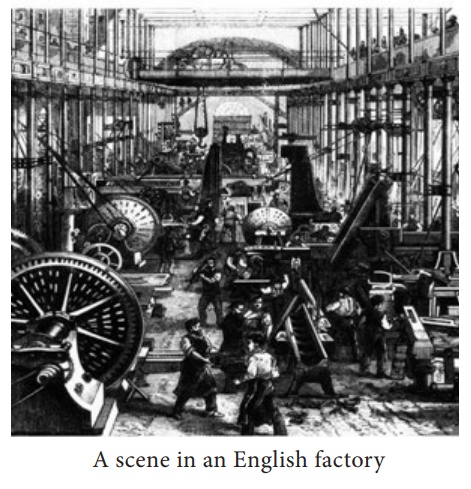
Development in Textiles
Before the Industrial Revolution, the spinning and weaving of cloth were undertaken for domestic and local consumption. It was done at home or in a small hired place. The production also took place on a cottage scale. The manually operated spinning wheel required four to eight spinners to supply yarn to one handloom weaver. In 1733 John Kay invented the ‘Flying Shuttle’ which, when operated by hand, increased the speed of the weaving of cloth. In 1767 James Hargreaves invented ‘the spinning jenny’. This machine spun eight threads at one and the same time. Two years later Richard Arkwright invented the ‘waterframe’. This spinning frame used water power in the place of manpower. The ‘waterframe’ was too big to be run at home. Thus was born the factory. In 1779 Samuel Crompton invented his ‘spinning mule’ which included a combination of both the ‘spinning jenny’ and the ‘water frame’. It spun hundreds of threads simultaneously and produced eight fine and coarse threads. Eli Whitney invented the cotton gin in 1793. Removing the seed from the cotton increased the productivity manifold. Cotton spinning powered by steam increased the output of a worker by a factor of around 500.
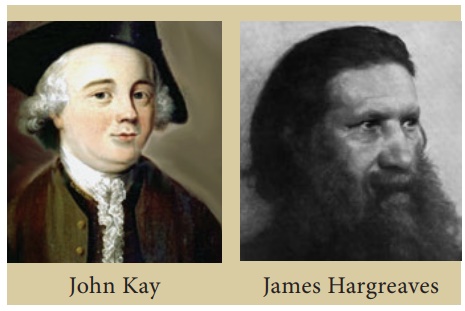
Textile manufacture was at the heart of the Industrial Revolution.
Over a span of fifty years, the textile manufacturing industry in Britain
witnessed a transformation in the method of production from handmade to
machine-made goods. The newly invented machines enabled factories to produce
textile goods in large quantities. Derbyshire, Lancashire, Cheshire,
Staffordshire, Nottinghamshire, and Yorkshire became the major factory centres.
The most notable was Manchester which had more than 50 mills in 1802. These
factories involved in mass production were organized on the principle of division
of labour.
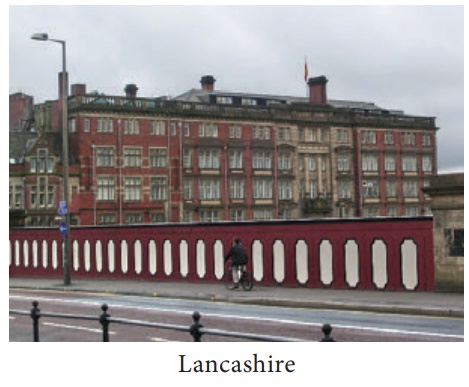
Iron and Steel
Iron and steel helped quicken the process of Industrialisation. In
olden days iron ore was smelted in brick furnaces. Charcoal was used as fuel.
The iron produced was not sturdy and strong. It had to be smelted again.
Finally coke (produced from coal) was used to produce iron. But this was a
costly method. The cast iron blowing cylinder was later improved by making it
double acting, which allowed higher blast furnace temperatures. The rolling
mill (machine for rolling steel or any other metal into sheets) proved to be
fifteen times faster than hammering wrought iron. Hot blast greatly increased
fuel efficiency in iron production. In 1856, Henry Bessemer discovered a faster
and cheaper method of producing steel. In course of time, iron and steel came
to be used in making all machines and in all industries.
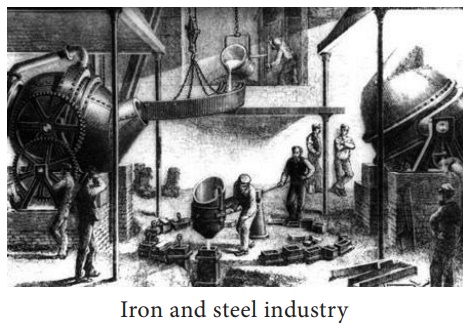
Mining
Industrial Revolution required fuel. Coal was needed in vast
quantities. Before the Industrial Revolution, two types of mines existed: drift
mines and bell pits. Both were small scale coal mines and the extracted coal
was used in homes and local work spots. As industrialisation gained pace, more
and more coal was needed to fuel steam engines and furnaces. The development of
factories by Arkwright and the improvement of the steam engine by James Watt
further increased demand for coal. As a result, coal mines became deeper and
deeper, making it more and more dangerous. As miners used oil lamps in the
mines the risk of explosion was high leading to the death of miners. This was
reduced by the invention of a safety lamp by Sir Humphrey Davy in 1815.
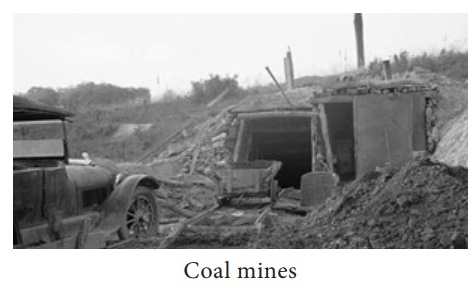
Transportation and Communication
Industrial Revolution was dependent on good transportation. As
production increased raw materials had to be brought from afar to the
factories. After the goods were produced they had to be transported to the
markets. As a result new networks of canals, roads and railroads were built.
Macadamised roads and George Stephenson’s steam locomotive helped to improve
road and railway transport system in the country.
John Loudon McAdam was a pioneering Scottish Engineer who single-
handedly changed the way roads were built around the world. Macadamised
road came to be adopted world over.
The railways date back to sixth century B.C. (BCE) in Corinth,
Greece. They were man or animal driven. In the sixteenth century Germany had
horse-powered rail transport. Modern rail transport commenced with the British
development of the steam locomotives in the early 19th century. The first
railway line in England was opened between Stockton and Darlington in 1825. In
the next forty years15000 miles of railway network was completed. Robert Fulton
of the US invented the steamboat called Clermont in 1807 that sailed from New
York to Albany, covering 150 miles. After a few years, steamboats carrying
cargo shuttled on the rivers and coastlines. By 1830, the 40 miles between
Manchester and Liverpool could be covered in an hour and a half.![]()
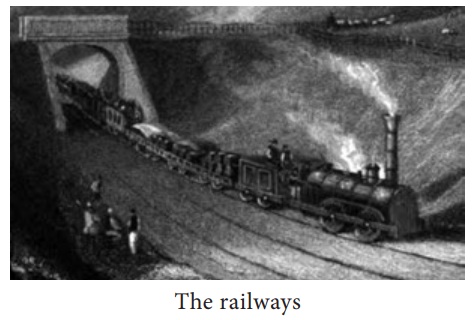
Related Topics